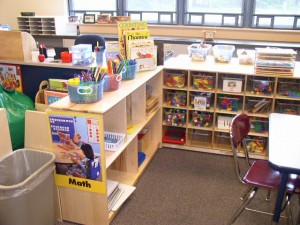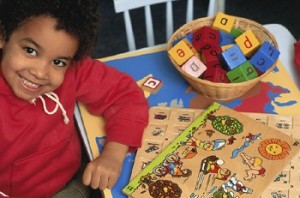Victoria at Unschooling Math left a comment on my blog post about Honoring Both Math Minds about how her son learns right now:
His pattern block designs are counted out and planned in his head before execution. They are usually symmetrical, laterally or radially. He is obsessed with designing and cutting snowflakes. He builds pyramids out of paper, Lego, anything he can get his hands on. He explored the different types of pyramids.
 This reminds me a lot of my builder son and how he went into his process of being a math mind. He was all about playing around with patterns between 5 and 7, and building things like you say your son is doing. Give that boy tape and paper, and the things he could make! I can see now in retrospect that by having that foundation provided to him, he developed his spatial skills to a high level that is a key ingredient to a math mind.
This reminds me a lot of my builder son and how he went into his process of being a math mind. He was all about playing around with patterns between 5 and 7, and building things like you say your son is doing. Give that boy tape and paper, and the things he could make! I can see now in retrospect that by having that foundation provided to him, he developed his spatial skills to a high level that is a key ingredient to a math mind.
So, how do we create that space in the early years in a classroom setting? In my book, The Right Side of Normal, in my last chapter exploring what do we do about learning in schools now that we know the right-brained information, I suggested that elementary school, especially between 5 and 7 years old, be set up like this:
A good education should support the early natural process of gift discovery and development with a strengths-based focus. A combination of a Montessori-infused learning environment of self-exploration and discovery, a Waldorf-inspired learning environment of creative outlet opportunities and picture-based exposure, and a preschool-style environment of diverse learning centers and play are ideal for the 5 to 7 year range. The children in this age range should experience ongoing opportunities for physical activity, play, and creative outlet development.
How schools are set up today are not conducive to supporting the math minds that Victoria and I experienced with our builder sons. Let’s talk about what my idea above would look like in practice. For instance, you know in preschools how  one corner of the room is block play, for instance? Could one corner of a 1st grade room be the math corner, and it has all kinds of manipulatives, building materials, tape and paper, number lines, abacuses, scales, etc, as well as left-brained things like flashcards, self-correcting math facts cards, wrap-ups, magnetic numbers, etc.
one corner of the room is block play, for instance? Could one corner of a 1st grade room be the math corner, and it has all kinds of manipulatives, building materials, tape and paper, number lines, abacuses, scales, etc, as well as left-brained things like flashcards, self-correcting math facts cards, wrap-ups, magnetic numbers, etc.
When it’s math time, the teacher demonstrates a concept such as addition. She could either show how it looks with a manipulative, with an abacus, with a number line, with a counter, with a wrap up. Since you’re showing 5 to 6 different ways, by number 3 or 4, you could ask a student if they want to try it with the next chosen demonstration tool. “Does anyone want to try it on this number line?”
Once the demonstration is over, the students all get to go over and get something from the math corner to bring to their own table, to a group area with others, or however they want to do it. They can play around with the concept or any other thing that floats their boat, because it’s all math. The teacher could walk around observing, throwing in some two cents where relevant, answering questions when asked, and then note certain things.

At the end of the let’s say 30 minute period, you can choose three children to share their “math moment” such as left-brained Suzy who used a number line worksheet (a paper with a bunch of number lines on it) to put her own addition problems under each number line and solved the problem. You could choose builder Joe who constructed a pyramid out of paper and tape and translate the math concept demonstrated (or look it up during geography and cultures to find out why later). And you can show visual math book Bobby who can show one thing he had liked from the book to the class. This way, concepts are taught, but the space for math mind building is created.

Building materials would be part of the math center!
It does mean coming at learning from a whole different vantage point, but I think it could be so doable. And how fun for everyone?

Because look what might happen…
After that Day One where the concept of addition is shown, the next day, five problems are put on the board for the children to go to the math corner and choose anything they want to assist them in solving the problems. Maybe one time you can do it as a group, another time, independently, etc. I see math being set up this way as easiest on the teacher and best for the student to come at the problems in their own unique way, plus get to dabble in other types of math ideas.
Assessment would be observation and portfolio based, as I showed in my prior math post. I see teachers now with a nice camera strapped around their necks, taking pictures of the amazing math work being done, or a quick video of  a child demonstrating something he discovered. These could be uploaded onto a class blog, like Ms. Cassidy’s Classroom Blog. Or the teacher can jot down the title of a math visual book a child was looking at, or keep the sample of a worksheet another child did. If she has 25 students, as long as she picks up something for 5 children each day, by the end of the week, a snapshot of learning will have occurred. Do this over a school year’s time, and we have a rich showcase of individual learning paths.
a child demonstrating something he discovered. These could be uploaded onto a class blog, like Ms. Cassidy’s Classroom Blog. Or the teacher can jot down the title of a math visual book a child was looking at, or keep the sample of a worksheet another child did. If she has 25 students, as long as she picks up something for 5 children each day, by the end of the week, a snapshot of learning will have occurred. Do this over a school year’s time, and we have a rich showcase of individual learning paths.
Question: What positives do you see in this kind of learning environment? What difficulties do you see? What are your visions of early learning environments that promote individuality and that also supports the different right-brained learning development?






4 responses to “Teacher Talk: Math Corners”